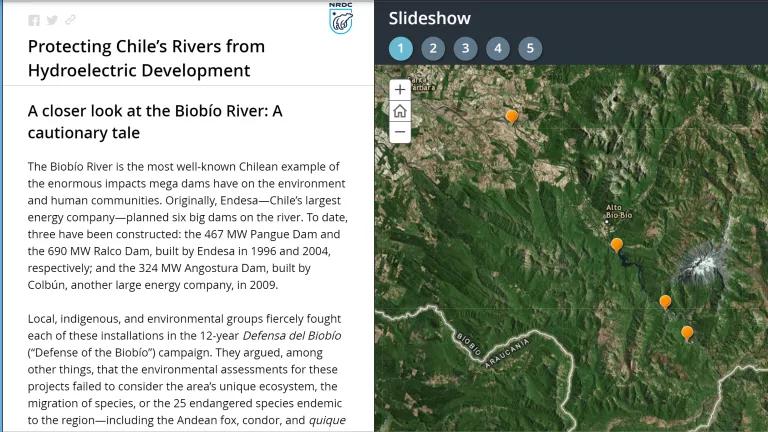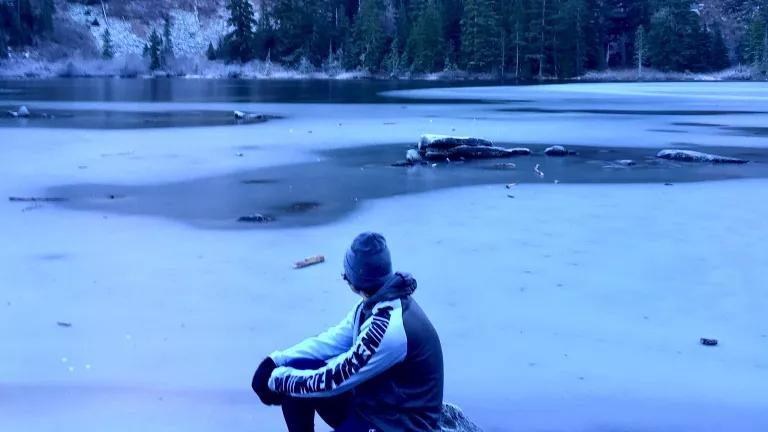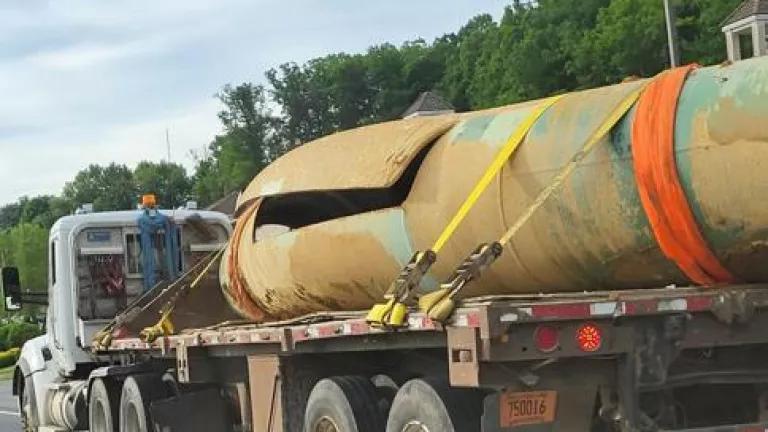Protecting Patagonia’s Rivers on World Water Day

Today is World Water Day, a day when it is worth reflecting on the many ways we are impacted by this resource that is both commonplace and extraordinary. We use water every day to brush our teeth, wash our hands, grow our food, and—quite simply—drink. Yet the earth’s changing climate is increasingly threatening the reliability and availability of this quotidian commodity, leaving visible and tangible impacts on people and wildlife in every corner of the world. As the need to protect the planet’s remaining water resources grows more urgent, NRDC is working on multiple fronts to ensure that communities and ecosystems around the world have the water they need to thrive now and to continue thriving into the future.
One of these efforts I am pleased to show off is a new interactive tool that NRDC has created ESRI to highlight the need to protect rivers in Chilean Patagonia from large hydroelectric development, called a story map which is available here.
As you can see from any physical map, Chile has a vast network of rivers flowing from the snow-capped Andes westward to the Pacific Ocean. What this story map is able to do, however, is combine a physical map with photos, videos and text to tell a more complete story—in this case, not only that Chile has an abundance of water in the central and southern parts of the country, but also that relatively few of the country’s rivers are still free-flowing. Many of those that are free-flowing are currently threatened by proposed projects. Indeed, the country already has 113 hydroelectric operations and at least 10 significant proposals on the books. Most of these proposals have sparked pushback from local citizens and organizations who are concerned about the impacts this kind of infrastructure would have on their environments, economies, and communities.
In addition to showing the locations and other details for existing and proposed hydroelectric plants, the story map is able to explain:
- Why Chile has historically depended on hydropower;
- What the problems with large hydroelectric power are;
- The current status of water rights in the country and how many water concessions are owned by energy companies; and
- Importantly—why the country does not need to build new large hydroelectric plants for a secure energy future but rather can focus on solar, wind, and other truly renewable technologies instead.
It also highlights several specific rivers or hydroelectric projects in different phases of development, to give readers a more concrete sense of the issues at stake.
We hope this story map will help raise awareness of the need to protect this amazing place and its remarkable water resources. Chilean Patagonia is truly one of the last, vast, and rugged expanses on the planet, and many of its unique characteristics are connected to its rivers. In addition, a future with dams in Patagonia is not what local communities prefer. A 2016 government poll measuring public perceptions of energy found that 88% of citizens in the southern region of Aysén approved of building wind power and 81% approved of solar power, yet that number dropped considerably to 52% when asked about hydroelectric dams.
We also want to bring international audiences directly to the local activists and organizations fighting to protect these rivers in Chile. These are the people whose dedication and passion helped lead to the defeat of the massive HidroAysén project in 2014. Still, three years later their struggles to protect their local rivers continue as new projects have been proposed.
So please explore and enjoy this story map that celebrates the stunning water resources of southern Chile, and share it with others.



